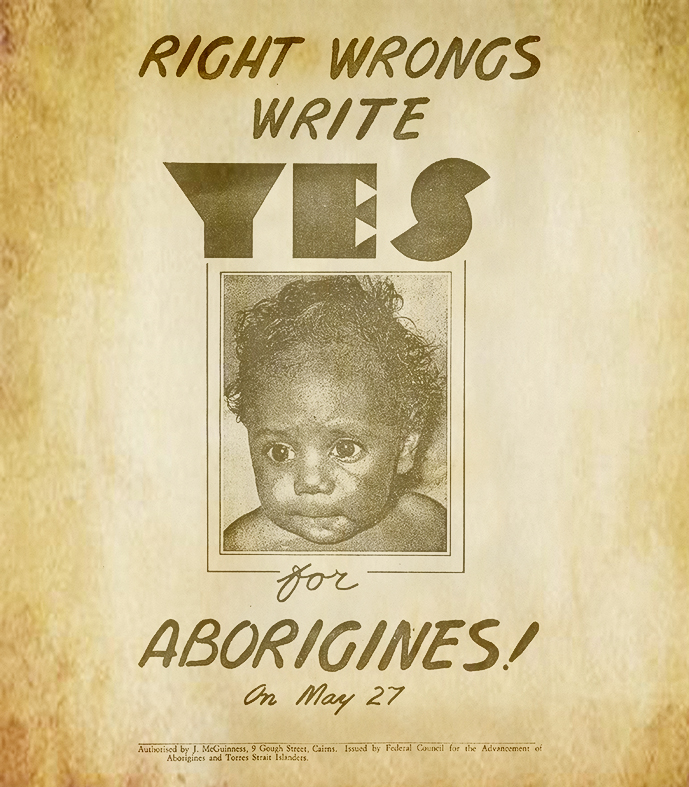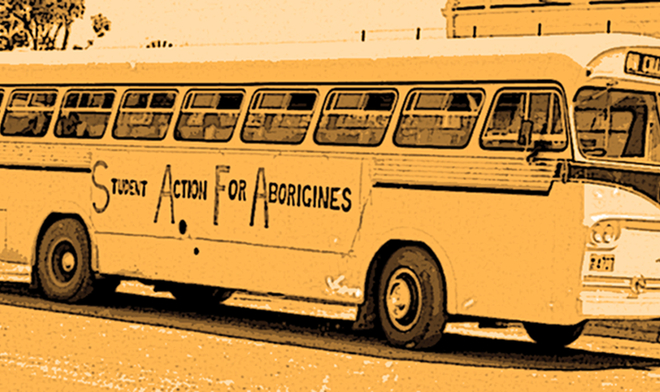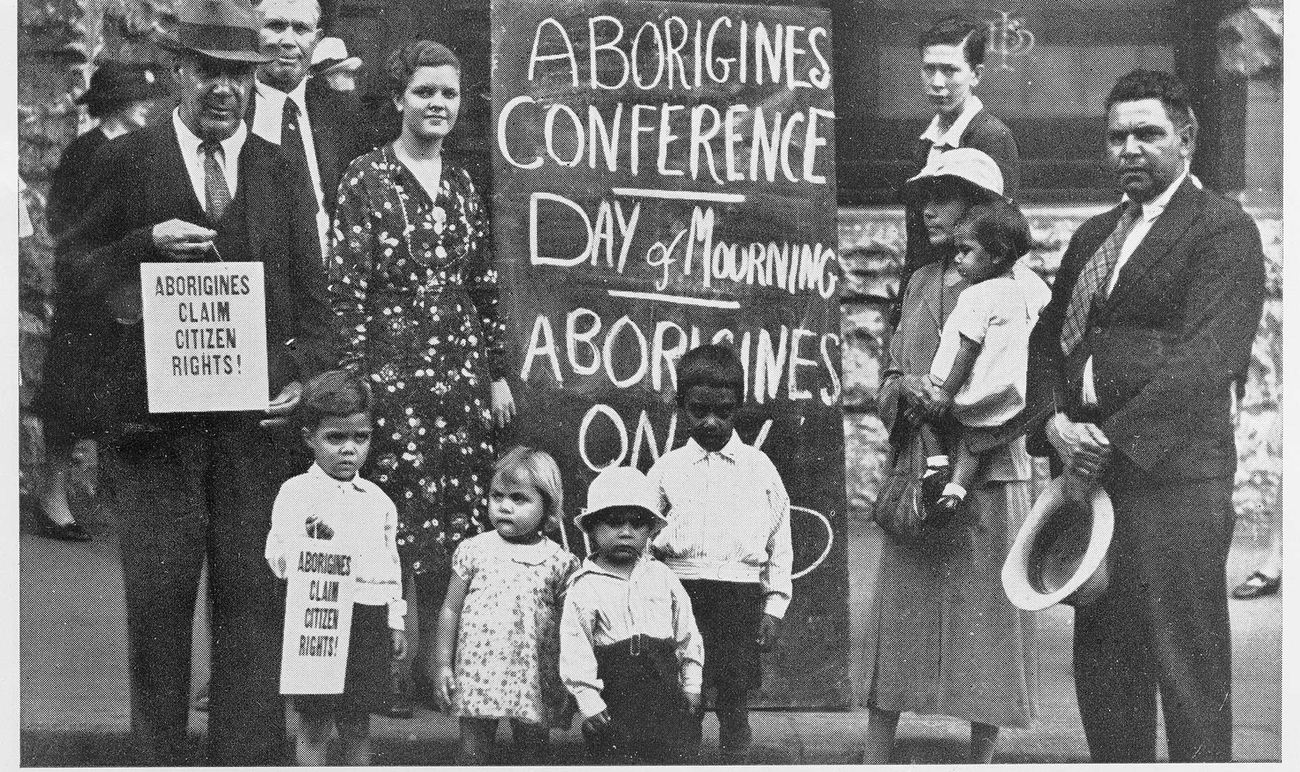Key facts
- The Australian Constitution sets out the laws of Australia.
- Referendums are the only way that you can change the Australian Constitution.
- The 1967 Referendum sought to change two sections of the Constitution in relation to Aboriginal and Torres Strait Islander peoples.
- 90.77 per cent of Australian voters voted ‘Yes’ to the changes.
While many people think that the Referendum gave Aboriginal and Torres Strait Islander peoples the right to vote, this wasn’t the case. Aboriginal people could vote at the state level before Federation in 1901; Queensland and Western Australia being the only states that expressly prevented Aboriginal and Torres Strait Islander peoples from voting.
It wasn’t until 1962, when the electoral act was amended, that Aboriginal and Torres Strait Islander peoples were given the right to register and vote, but voting was not compulsory. Full voting rights were not granted federally until Aboriginal and Torres Strait Islander people were required to register on the electoral roll in 1984.
The Constitution
The Australian Constitution came into effect on 1 January 1901, establishing the Commonwealth of Australia. It is a living document — which continues to shape Australia — and is notoriously difficult to change. Since 1901, 19 referendums have proposed 44 changes to the Constitution; only eight changes have been agreed to.
Before a referendum can take place, the proposed changes must be approved by the Parliament and put to the Australian voting public. A referendum is only passed if it is approved by a majority of voters in a majority of states, and by a majority of voters across the nation. This is known as a double majority. Territory voters are only counted in the national majority.
The need for change
When the Constitution first came into being in 1901 there were only two parts that referred to the First Peoples of Australia: Section 51 (xxvi) gave the Commonwealth power to make laws with respect to ‘people of any race, other than the Aboriginal race in any state, for whom it was deemed necessary to make special laws’; and Section 127 provided that ‘in reckoning the numbers of people of the Commonwealth, or of a State or other part of the Commonwealth, aboriginal natives shall not be counted’.
This meant that Aboriginal and Torres Strait Islander people weren’t recognised as part of the Australian population.
It also meant that the states could create their own policies for Aboriginal and Torres Strait Islander peoples. Dispossession was rampant, as was oppression and control of Aboriginal and Torres Strait Islander peoples’ lives. The states enacted Aboriginal Protection Acts which gave them the legal right to remove children from their families.
Campaigning for change
Aboriginal and Torres Strait Islander peoples have always protested and fought against these injustices. There was no single moment that sparked the 1967 Referendum, more a growing swell of support for change led by a range of people and organisations. In the late 1950s, changes in other countries toward equality and civil rights focused public attention on the injustices faced by Aboriginal and Torres Strait Islander peoples.
Protest events were getting more media attention as well. The Warburton Ranges controversy in 1957, the Yirrkala Bark Petitions in 1963, the 1965 Freedom Ride and the Wave Hill walk-off that began in 1966, are some that drove these issues into the international spotlight.
Targeted and effective campaigns were run by organisations like the Federal Council for the Advancement of Aborigines and Torres Strait Islanders (FCAATSI), the Australian Aborigines League, the Aboriginal-Australian Fellowship, and the Aborigines Progressive Association.
The ABC and AIATSIS’ collaborative online exhibition ‘Right Wrongs’ is an excellent resource that pays tribute to these protests, organisations and individual activists.
Australians vote yes to change the Constitution
On 27 May 1967, Australians voted to change the Constitution so that like all other Australians, Aboriginal and Torres Strait Islander peoples would be counted as part of the population and the Commonwealth would be able to make laws for them. A resounding 90.77 per cent said ‘Yes’ and every single state had a majority result for the ‘Yes’ vote. It was one of the most successful national campaigns in Australia’s history.
Thousands of people worked on the campaign and achieving the ‘yes’ was a huge victory, signalling a change in the mindset of Australia’s majority. It opened the door to First Nations Australian agency, bringing to light many strong leaders and organisations, and the expectation that things could be different. Change was possible, and they were willing to fight for it. In many ways, that fight continues today.
- Read more in the Aboriginal Studies Press publication: The 1967 Referendum by Bain Attwood and Andrew Markus



